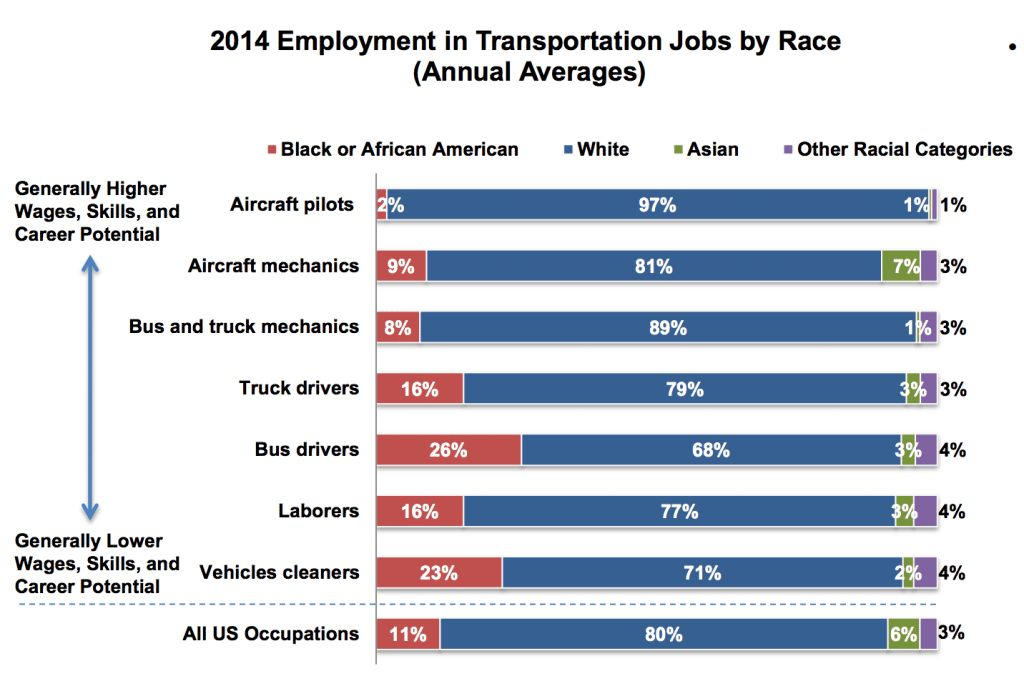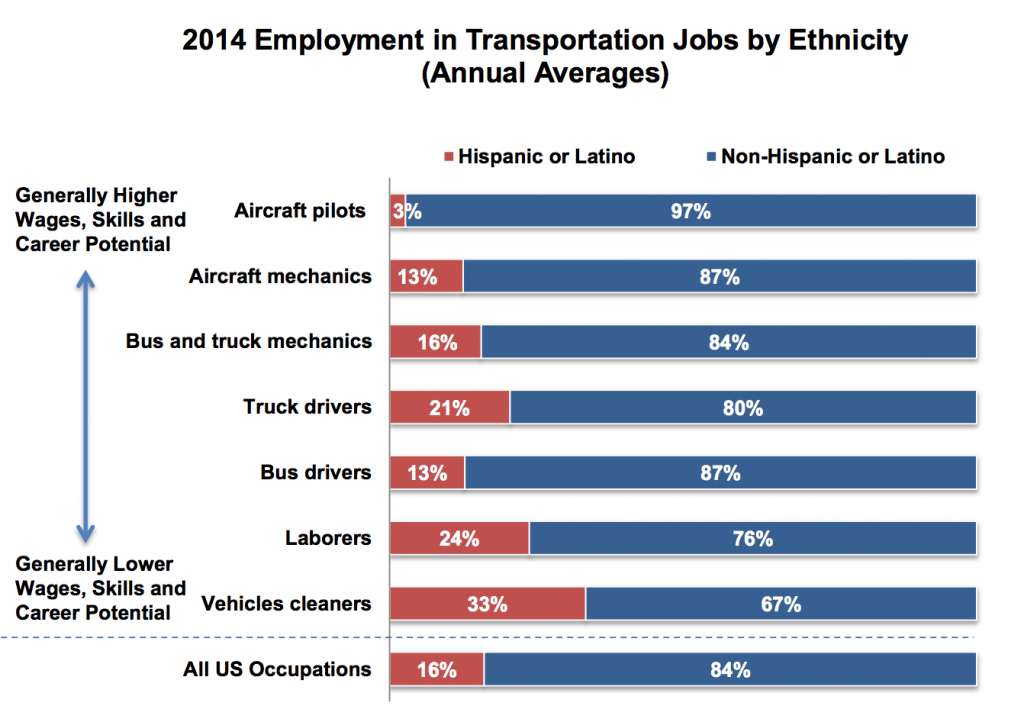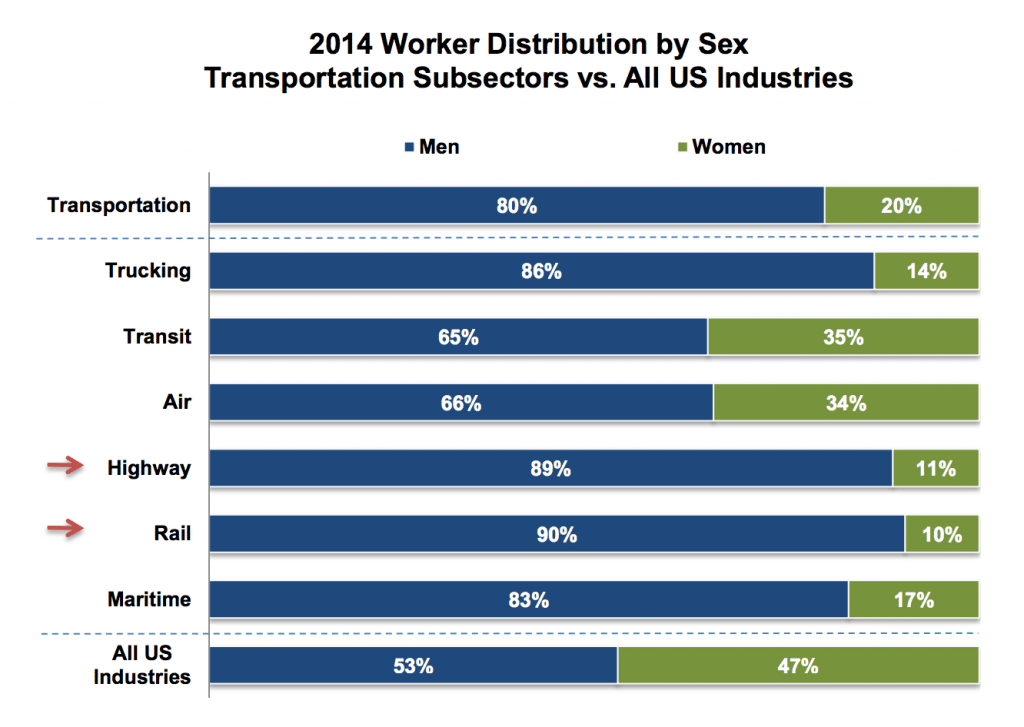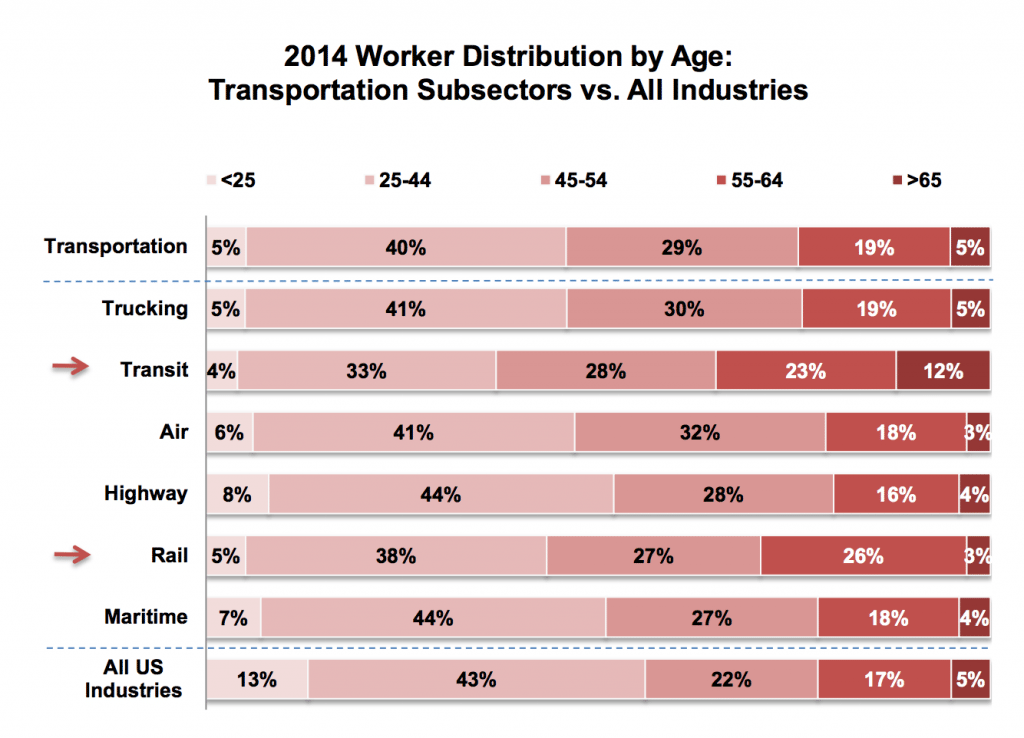Skift Take
Diversity matters, especially for the passenger experience, and the U.S. airline that starts to usher in change has a lot to gain.
U.S. airlines will hire more than 317,000 new employees by 2022, according to projections from the U.S. Department of Transportation (DOT), but this growth is not expected to improve the industry’s lower rate of employment among women and non-white men.
The report’s numbers offer an updated look at realities highlighted in past Skift coverage, and show the challenge U.S. carriers have had both improving diversity within their ranks or even maintaining the already low numbers they previously had.
For example, in 2012 the U.S. Bureau of Labor Statistics (BLS) estimated about 93% of airline pilots and flight engineers were White and 2.7% were Black or African-American. The 2014 BLS data found 97% were White and only 2% were Black or African-American. The same downward slope is true for Hispanic or Latino workers–in 2012 about 5% of airline pilots identified as part of this group and last year only 3% identified.
Source: U.S. Bureau of Labor Statistics
Women also continue as an under-represented group, accounting for just over one-third of all air transportation sector employees, less than the average for all U.S. industries.
Source: TLC and JFF analysis of EMSI Industry Reports
It’s also an older industry: 53% of employees in occupations such as flight attendants, air traffic controllers, and airline pilots are aged 45 and older, more than the overall average for all U.S. industries (44%).
Source: TLC and JFF analysis of EMSI 2014 Industry Report
The following chart also details median annual wage projections for various airline occupations during the next 10 years. It’s worth pointing out the DOT defines “airline pilots and copilots” as those who “navigate the flight of fixed-wing, multi-engine aircraft, usually on scheduled air carrier routes for the transport of passengers and cargo,” compared to commercial pilots defined as those who “pilot and navigate the flight of fixed-winged aircraft on nonscheduled air carrier routes or helicopters.”
The report also indicates metro areas such as Dallas, San Francisco, Denver, and Indianapolis will see the most airline job growth. American Airlines, which is based in Fort Worth, Texas near Dallas, said it has about 100,000 employees, up 7% year-over-year, and 25,000 of those employees are based in Dallas.
| Title | 10 year job openings | Median annual wages |
|---|---|---|
| Flight attendants | 96,205 | $37,240 |
| Airline pilots, copilots, and flight engineers | 57,896 | $113,877 |
| Aircraft mechanics and service technicians | 56,968 | $60,861 |
| Laborers and frieght, stock, and material movers | 49,928 | $30,493 |
| Transport workers (other) | 26,841 | $39,312 |
| Air traffic controllers | 24,416 | $121,280 |
| Customer service representatives | 20,557 | $29,494 |
| Commercial pilots | 18,336 | $72,386 |
| Baggage porters and bellhops | 15,699 | $20,634 |
| Vehicle and equipment cleaners | 9,430 | $25,771 |
Source: U.S. Bureau of Labor Statistics
The Daily Newsletter
Our daily coverage of the global travel industry. Written by editors and analysts from across Skift’s brands.
Have a confidential tip for Skift? Get in touch
Photo credit: Women still aren't on equal footing with men at U.S. airlines. Pictured here are Virgin America flight attendants at Dallas Love Field. Max Faulkner / Fort Worth Star-Telegram/MCT



